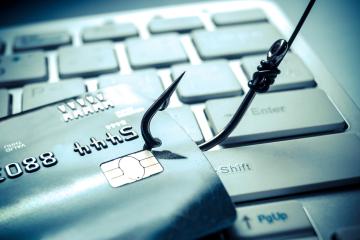Clone phishing refers to a type of phishing attack where the attacker impersonates a real user account in order to trick victims into revealing sensitive information or installing malware.
This is done by using an email address and website that closely resembles a legitimate organization to gain the victim's trust.
Attackers copy a real message and change it to fool the receiver. They want to steal information, install harmful software, or make the person do something dangerous without realizing it. It works because it looks like it came from someone you actually know. Clone phishing is a big risk for anyone who uses email.
Clone phishing is a dangerous threat because it exploits familiarity and habit to carry out its attack.
Key Concepts
Definition:
Clone phishing is when an attacker copies a real email message and makes changes before sending it to trick the receiver. They edit the copied message to add bad links or attachments that can harm a computer or steal private information if opened. The edited message looks like it came from a person or business the receiver knows and trusts.
Purpose:
Clone phishing aims to trick people by using the names and accounts of their friends, family, or work contacts. The receiver's guard goes down when they think the message comes from someone familiar. This allows the hackers to carry out their schemes.
Relevance:
These attacks are very relevant today because they exploit the way people naturally respond to emails from those they know. Attackers are relying more on fooling humans instead of just breaking into computer systems.
Components/Types
Carrying out these schemes takes a few steps:
- Account Compromise: The first thing attackers have to do is break into a real email account that they can copy messages from. There are many ways they can take over an account, like scamming someone into revealing their password, hacking account passwords, or stealing the password file from a website. Once the attackers control the account, they can access the past messages.
- Familiar Sender Identity: Criminals need access to an account that their fake message will look authentic coming from. This is often the account of someone the receiver knows, like a friend, coworker, or business partner. Seeing a message apparently from a familiar name makes the receiver less suspicious.
- Message Editing: After picking an account to copy from, the attackers pick out a legitimate message. They use this real message as their template for crafting a fake one. The content looks familiar, but they edit in harmful extras like infected file attachments or bad links leading to fake login pages designed to steal passwords and account information.
Examples
- Personal Contacts: An attacker gains access to someone's social media account and copies the last message thread with a friend. They add an attachment infected with malware and send it from the compromised account. The receiver is used to chatting with their friend regularly, so they open the document without thinking twice.
- Business Partners: A company routinely communicates with vendors using email to send purchase orders and confirm deliveries. A hacker finds these past messages in a stolen account and copies an old order form. They edit in a bad link seeming to go to order tracking before sending it off. An accounts payable clerk is used to these forms from the vendor, clicks the link, and has their financial login credentials stolen.
Importance in Cybersecurity
These social engineering-based attacks are extremely relevant cybersecurity threats today. Both individuals and organizations are at risk:
- Personal Security Risks: Identity theft if accounts are compromised, sensitive data and photos leakage, malware installation leading to other device account breaches or financial fraud through access to saved payment information.
- Business Security Risks: Data breaches if employees open infected emails on company devices and networks, financial fraud through vendor invoice scams, and reputation damage if customers are impacted.
- Sector-Wide Impact: Financial, government, critical infrastructure, and healthcare organizations face increased clone phishing attacks because compromised accounts in these sectors enable more damaging fraud or data theft.
Defense Strategies
Fighting these threats takes both smart technology and savvy people:
- Securing Accounts: Make account fraud more difficult with multi-factor login authentication that requires more than just a password to get in. Monitor account activity levels for signs of cloning.
- Email Security: Filter attachments and scan links with updated antivirus tools to catch infections. Block clearly risky file types. Use email authentication like SPF/DKIM to confirm sender identity.
- Personnel Training: Educate all employees on cybersecurity best practices through comprehensive training units. Test them with simulated phishing emails to identify gaps and improve vigilance. Ensure personnel understand evolving social engineering techniques.
Best Practices
These tips can aid in clone phishing defense for both individuals and organizations:
- Carefully inspect messages before clicking links or attachments, even if sender appears to be someone you know well. Unexpected attachments from known contacts in particular should raise suspicion.
- If a message requests sensitive information or sudden urgent action like an invoice payment, verify it is legitimate by calling the alleged sender. Use their publicly listed company number, not the contact info in the questionable email itself.
- Take time to hover over embedded links and check that destination URLs match what you expect from a given organization. Malicious links will try to mimic legitimate domains.
- Keep all systems, software, and apps across devices updated with the latest security patches which fix vulnerabilities attackers exploit.
- At organizations, mandate baseline annual cybersecurity training for all personnel, followed by regular phishing simulation emails to identify those needing additional education on threats.
Related Terms
- Social Engineering: Manipulating human tendencies and relationships to gain trust or compliance from targets. Increasingly used technique.
- Spear Phishing: Highly targeted phishing attacks against specific individuals researched in advance for greater effectiveness.
- Business Email Compromise (BEC): Social engineering tactics focused on infiltrating business finance operations to initiate fraudulent wire transfers.
Further Reading
- Phishing Activity Trends Report
- Trend Micro Research Paper - Phishing Activity Trends Report
- FBI Public Service Announcement on Business Email Compromise
- NIST Guide to Cyber Threat Information Sharing
Attackers are experts at impersonating trusted contacts through carefully crafted clone phishing tactics targeting human instinct. But individuals and organizations can fight back against these schemes by verifying messages, securing accounts, training personnel, and keeping technology defensive measures current. Staying alert and protecting accounts removes the resources attackers need to conduct these socially engineered frauds and data thefts - and keeps our inboxes safe.


